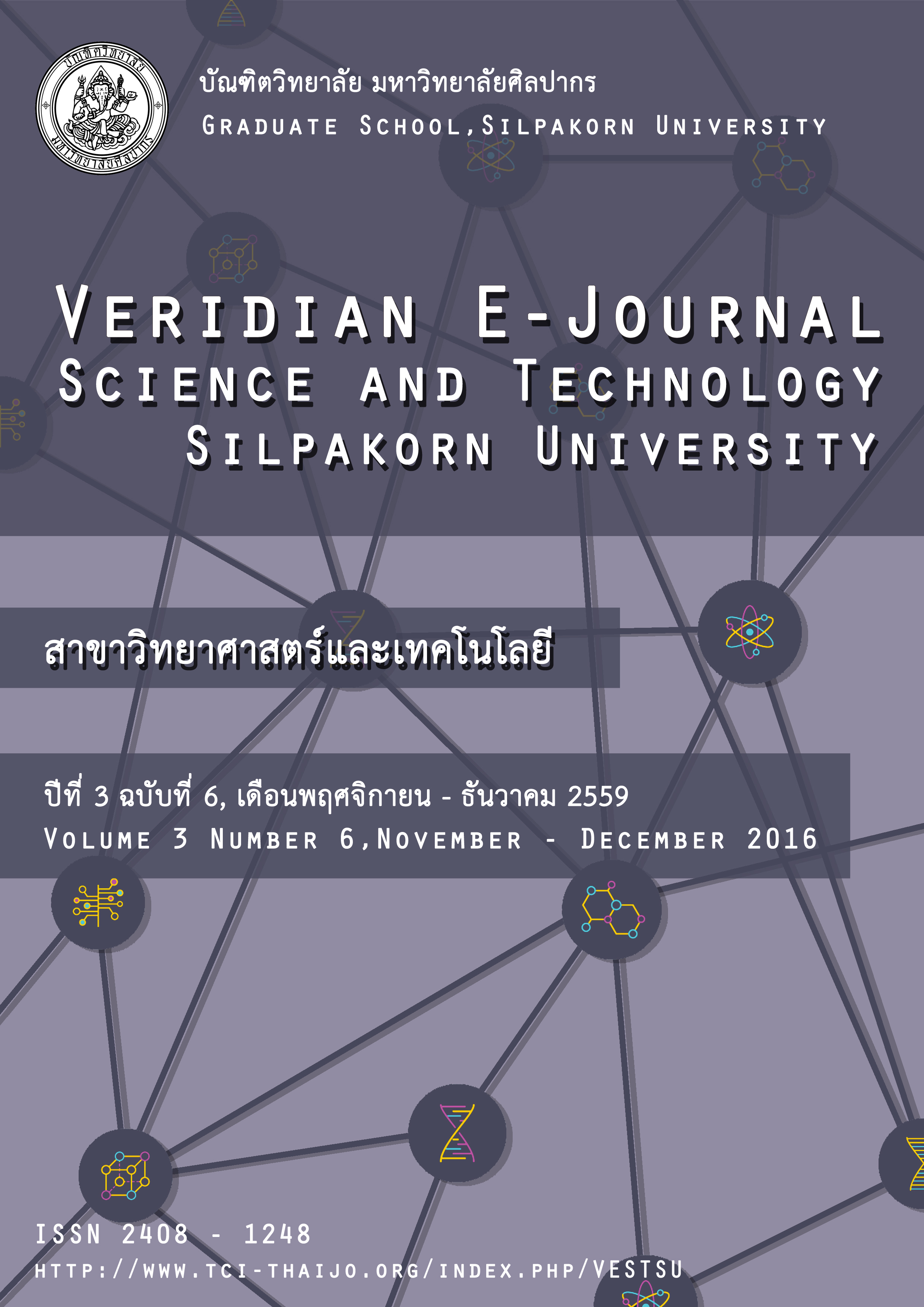การรับรู้สภาวะสิ่งแวดล้อมอุตสาหกรรมของนักเรียน กรณีสิ่งเร้าที่เป็นฝุ่นละออง
Main Article Content
Abstract
งานวิจัยนี้จึงมีจุดประสงค์เพื่อศึกษาการรับรู้ถึงสภาวะคุณภาพอากาศและผลกระทบที่เกิดขึ้นกับสุขภาพของนักเรียนระดับชั้นประถมและมัธยมศึกษาตอนต้นในโรงเรียนที่ตั้งอยู่ในพื้นที่อุตสาหกรรม โดยมีปริมาณฝุ่นละอองที่มีขนาดเส้นผ่านศูนย์กลางไม่เกิน 10 ไมครอน (PM10) เป็นตัวชี้วัดคุณภาพอากาศ โดยเริ่มจากการวิเคราะห์ความแตกต่างของปริมาณและการได้รับสัมผัส PM10 ของนักเรียน เปรียบเทียบระหว่างโรงเรียนที่อยู่ใกล้และที่อยู่ไกลโรงงานอุตสาหกรรมอย่างละ 2 โรงเรียน และใช้แบบสอบถามเพื่อสอบถามการรับรู้อาการเกี่ยวกับระบบทางเดินหายใจและทัศนคติด้านคุณภาพอากาศในห้องเรียนและผลกระทบต่อสุขภาพของนักเรียน จากนั้นนำผลการตรวจวัด PM10 และข้อมูลจากแบบสอบถามมาคำนวณการได้รับสัมผัส PM10 เฉลี่ยรายวัน (Average Daily Intake หรือ ADI) เปรียบเทียบระหว่างนักเรียนที่อยู่ใกล้และไกลโรงงานอุตสาหกรรม ผลการศึกษาพบว่า ความเข้มข้นของ PM10 ของโรงเรียนที่อยู่ใกล้โรงงานอุตสาหกรรมมีค่าเฉลี่ย 174±87 มคก./ลบ.ม. ซึ่งมากกว่าโรงเรียนที่อยู่ไกลโรงงานอุตสาหกรรมที่ซึ่งมีค่าเฉลี่ย 136±51 มคก./ลบ.ม. อย่างมีนัยสำคัญ (α = 0.05) ส่วนการได้รับสัมผัสของนักเรียนในโรงเรียนใกล้โรงงานอุตสาหกรรมพบว่ามีค่า ADI (หน่วย มคก./กก.ของน้ำหนักร่างกาย/วัน) เฉลี่ย 10±2 ซึ่งสูงกว่าโรงเรียนที่อยู่ไกลโรงงานอุตสาหกรรมที่มีค่าเฉลี่ย 5±1 ผลของแบบสอบถามชี้ว่านักเรียนในโรงเรียนใกล้โรงงานอุตสาหกรรมมีความรู้สึกหายใจติดขัดมากกว่าอย่างมีนัยสำคัญทางสถิติ (α = 0.05) ส่วนอาการอื่น ๆ อาทิ ภูมิแพ้ แสบคอ/จมูก เป็นหวัดบ่อยและระคายเคืองตาพบว่า ไม่มีความแตกต่างกันทางสถิติ ในประเด็นทัศนคติด้านคุณภาพอากาศและผลกระทบต่อสุขภาพพบว่า นักเรียนที่อยู่ใกล้โรงงานอุตสาหกรรมรู้สึกว่ามีฝุ่นในห้องเรียน ได้รับผลกระทบจากโรงงานอุตสาหกรรม ได้รับความรำคาญ กังวล เครียดและรู้สึกว่าฝุ่นมีผลต่อสุขภาพมากกว่านักเรียนที่อยู่ไกลโรงงานอุตสาหกรรมอย่างมีนัยสำคัญทางสถิติ (α = 0.05) ยกเว้นความพึงพอใจต่อคุณภาพอากาศในห้องเรียนที่ไม่มีความแตกต่างกันระหว่างกลุ่มทั้งสอง
This research has an objective to investigate perception on air quality and its health effects of elementary and primary school students in schools located in an industrial area. Quantities of particulate matters with a diameter less than 10 microns (PM10) were used as an air quality indicator. Initially, PM10 quantities and students’ exposure of PM10 were analyzed compared between the schools near and far from the factories. Two schools located each of the locations were selected for the study. Questionnaire survey was conducted to find the students’ perceptions of symptoms relevant to the respiratory system. Students’ attitudes on classroom indoor air quality and their health impacts were also included in the survey. Average Daily Intake (ADI) of PM10 in schools near to and far from industries was then calculated using the results of PM10 quantities and from the question survey. The results found that average PM10 concentration at the near-factory schools (NS) was 174±87 µg/m3 statistically higher than those in the far-factory schools (FS), which was 136±51 µg/m3 (α = 0.05). For PM10 exposure assessment, NS students have average ADI value (unit: µg/kg body weight per day) of 10±2, higher than those in FS in which the value was 5±1. The questionnaire study indicate that NS students had a significant feeling of obstructed breathing than those in FS (α = 0.05). Other feelings such as allergy, sore nose and throat, frequent of flue and eyes irritation, however, had no significant different. For the attitudes toward air quality and health impact, NS students replied a feeling of dusty in their classrooms, facing an impact from industries, feeling annoyance; worry; stress, and feeling of health impact due to particulate matters exposures than those in FS students, with a statistical significant (α = 0.05). Excepted satisfy of air quality in their classrooms, where there was no statistical significant difference found between the both groups.

